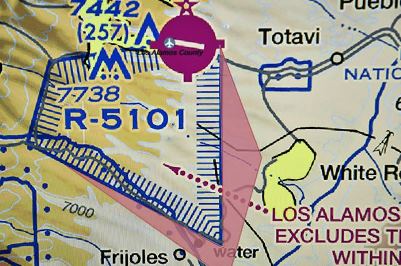
Los Alamos National Lab Testing Drone Disruption System
"All airspace over the laboratory is protected right now against unauthorized drone or UAS flights," said Michael Lansing, who heads the laboratory's security operations. "We can detect and track a UAS and if it poses a threat, we have the ability to disrupt control of the system, seize or exercise control, confiscate, or use reasonable force to disable, damage, or destroy the UAS."
Los Alamos National Laboratory announced June 13 that, in collaboration with the National Nuclear Security Administration and the Federal Aviation Administration, it has deployed a system to counter all unauthorized unmanned aircraft systems over its restricted airspace and an additional, adjacent FAA-designated "No Drone Zone." The system is government-authorized and currently in an operational testing phase, according to the DOE lab's announcement.
"All airspace over the laboratory is protected right now against unauthorized drone or UAS flights," said Michael Lansing, who heads the laboratory's security operations. "We can detect and track a UAS and if it poses a threat, we have the ability to disrupt control of the system, seize or exercise control, confiscate, or use reasonable force to disable, damage, or destroy the UAS."
 Armed with legal authority granted by Congress through the 2017 National Defense Authorization Act, the NNSA has the enhanced ability to protect its facilities from any drones that may pose a threat to the safety or security of assets and personnel, according to the announcement, which also said the Counter-UAS program at Los Alamos will be the blueprint for future programs at three other NNSA sites -- the Pantex Plant in Amarillo, Texas; the Y-12 facility in Oak Ridge, Tenn.; and the National Nuclear Security Site in Mercury, Nev.
Armed with legal authority granted by Congress through the 2017 National Defense Authorization Act, the NNSA has the enhanced ability to protect its facilities from any drones that may pose a threat to the safety or security of assets and personnel, according to the announcement, which also said the Counter-UAS program at Los Alamos will be the blueprint for future programs at three other NNSA sites -- the Pantex Plant in Amarillo, Texas; the Y-12 facility in Oak Ridge, Tenn.; and the National Nuclear Security Site in Mercury, Nev.
(The map with this article shows FAA restricted airspace above Los Alamos National Laboratory (R-5101) and the additional No Drone Zone in red.)
In cooperation with the FAA, NNSA has defined a threat as "the reasonable likelihood that an unmanned aircraft system or unmanned aircraft activity, if unabated, could inflict or otherwise cause physical harm to a person; inflict or otherwise cause damage to property or systems; interfere with the operational mission of a covered facility or asset; conduct unauthorized surveillance or reconnaissance; or result in unauthorized access to, or disclosure of, classified or otherwise lawfully protected information."
Under separate authority, FAA has established "no drone zones" for sites with Category I Special Nuclear Materials. NNSA also has developed signage to advise drone operators about specific airspace boundaries where they may not fly their aircraft and that violating the airspace will have severe consequences. "Implementation guidance by NNSA focuses on high-level actions to be taken to detect, identify, track and mitigate drones that pose a threat to NNSA covered facilities," said Lewis Monroe III, director of NNSA's Office of Security Operations and Programmatic Planning.